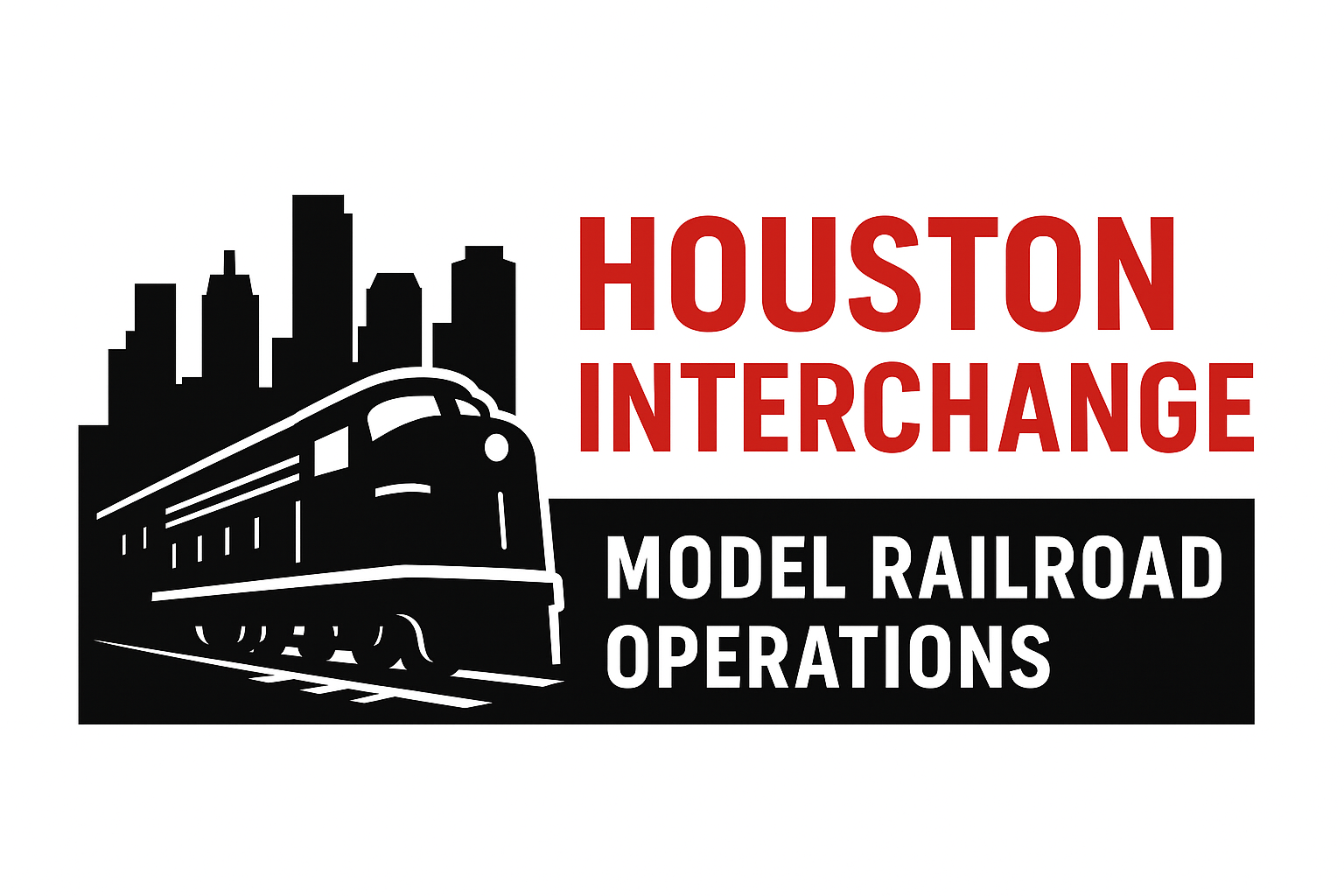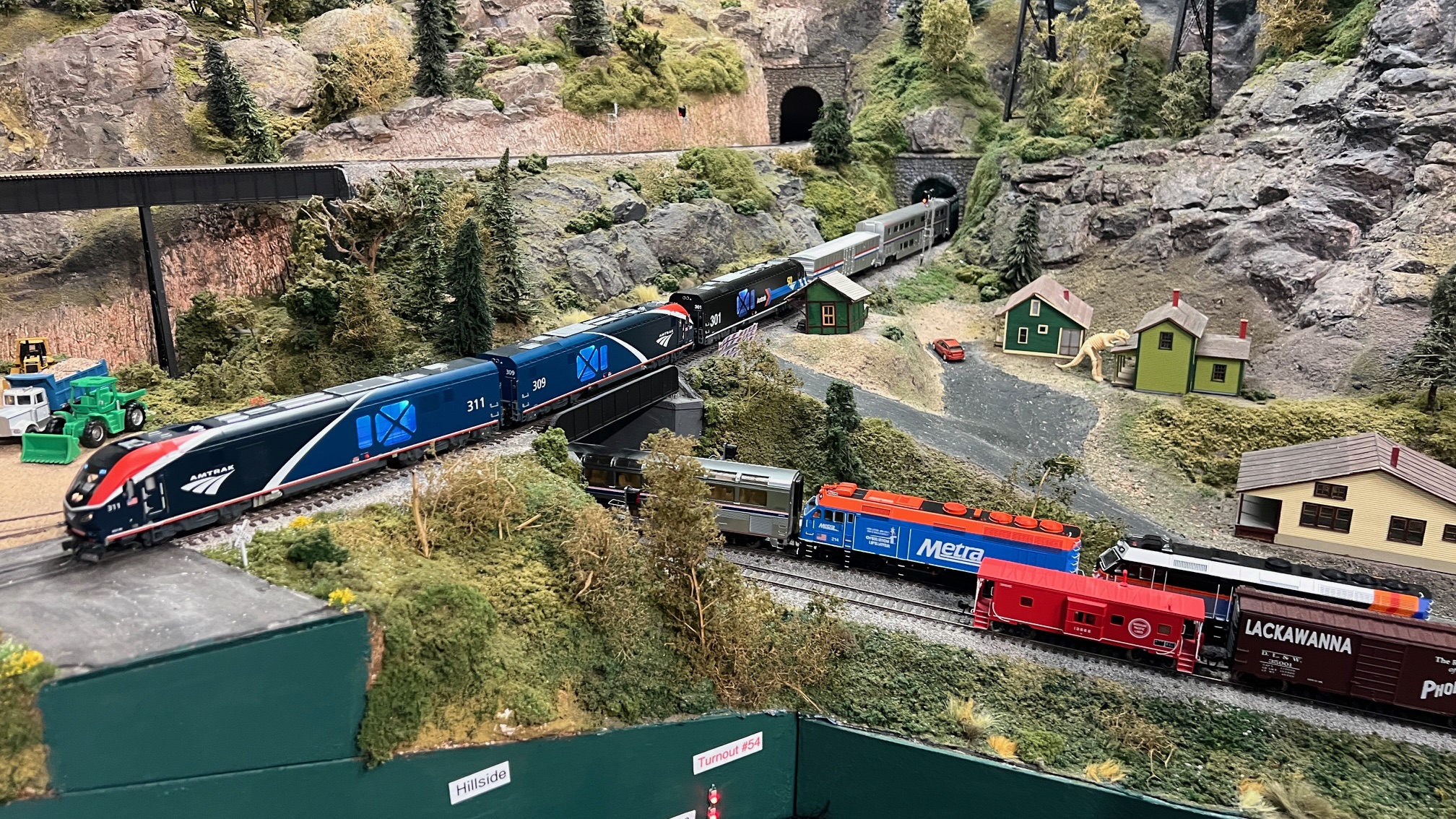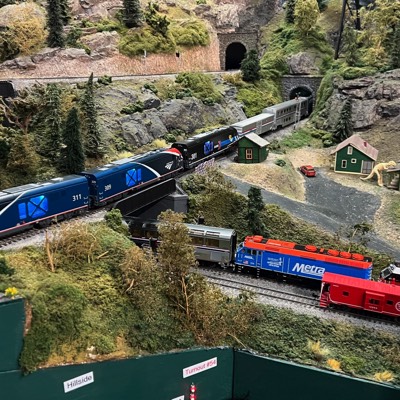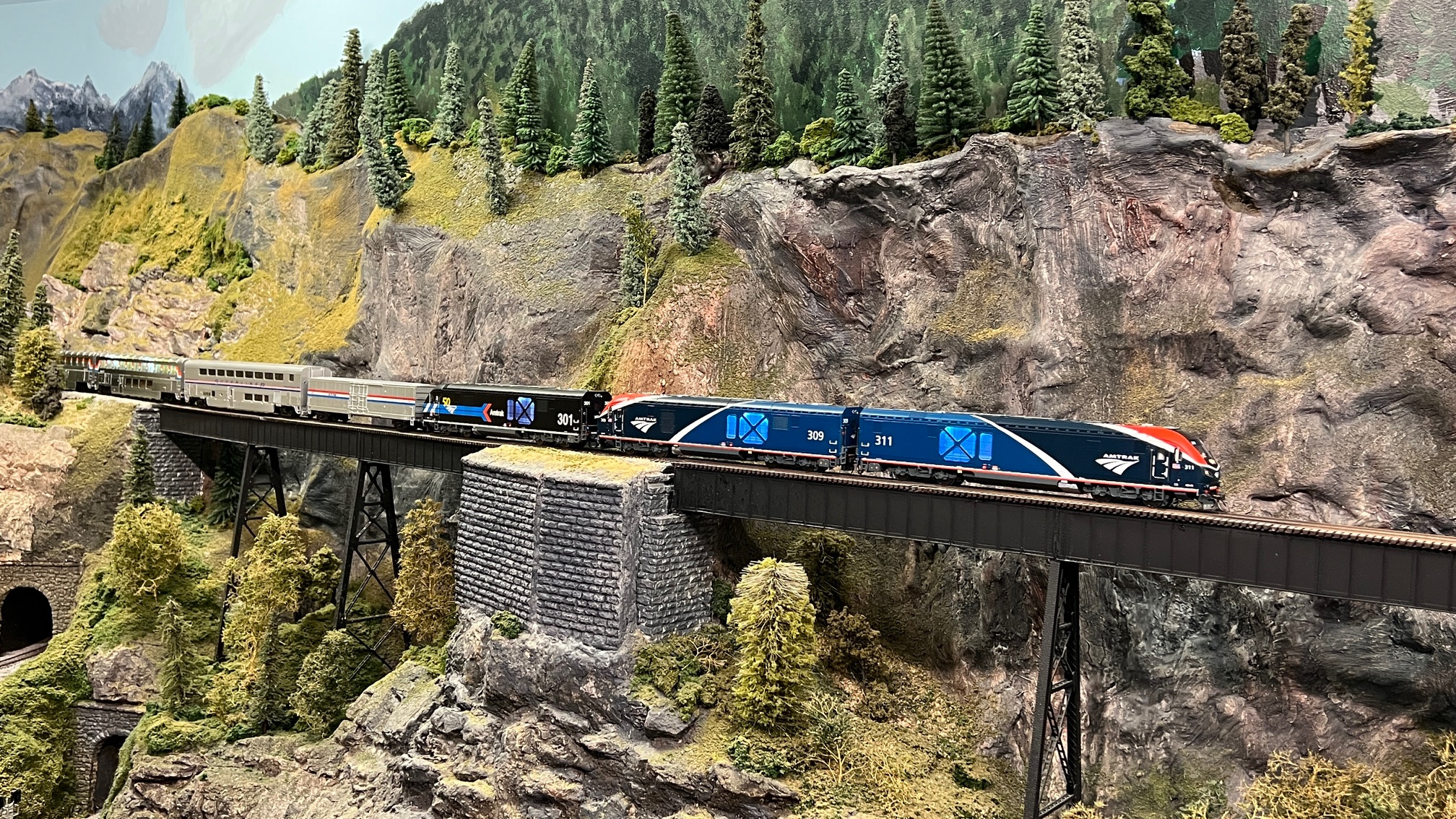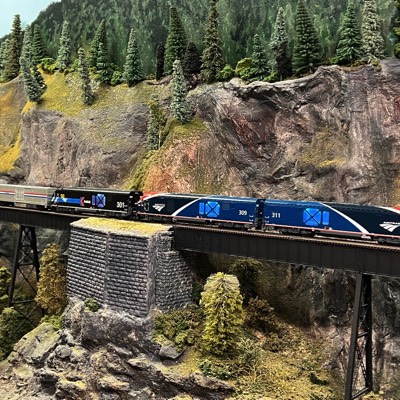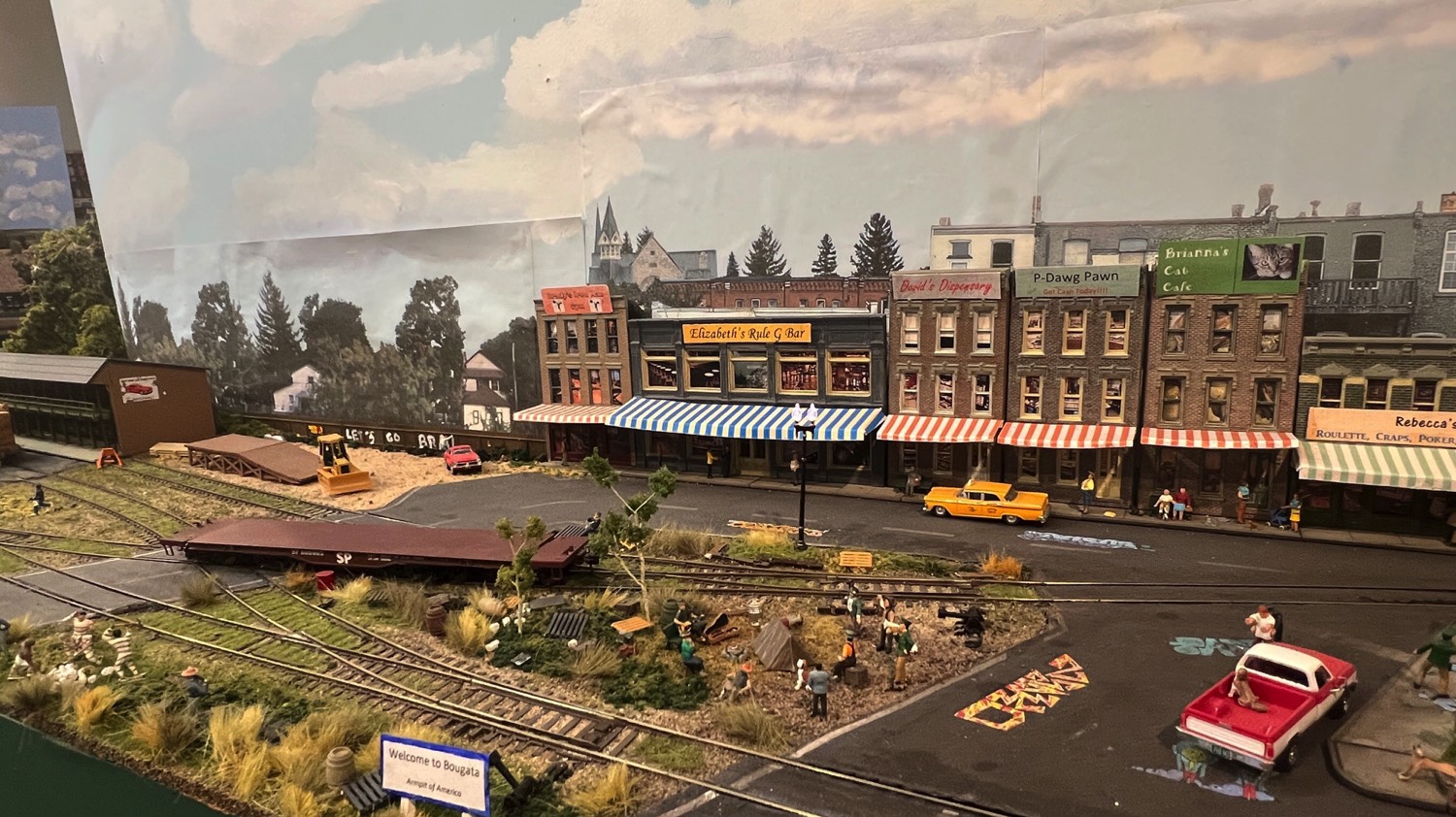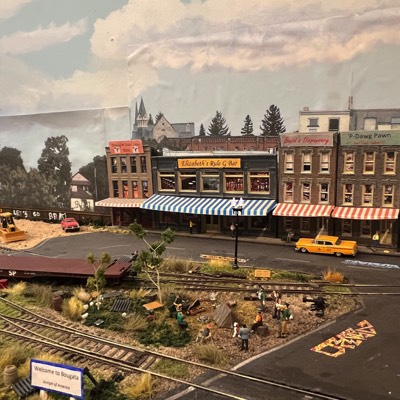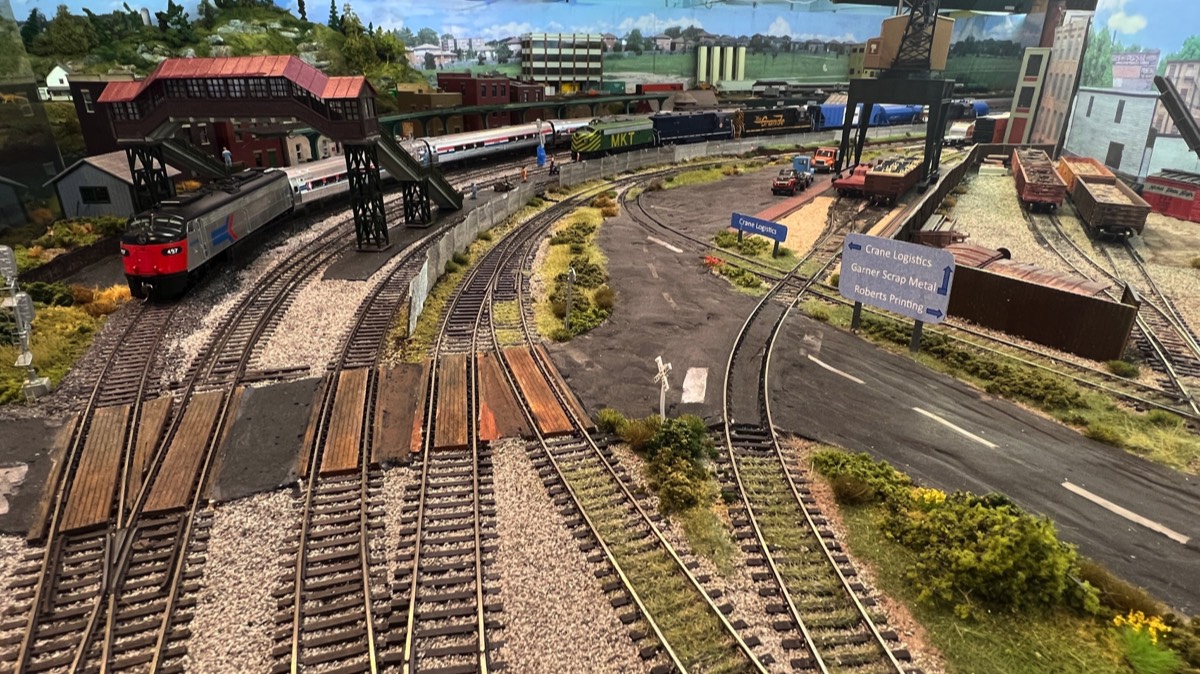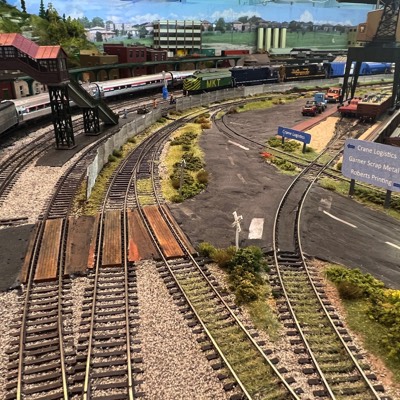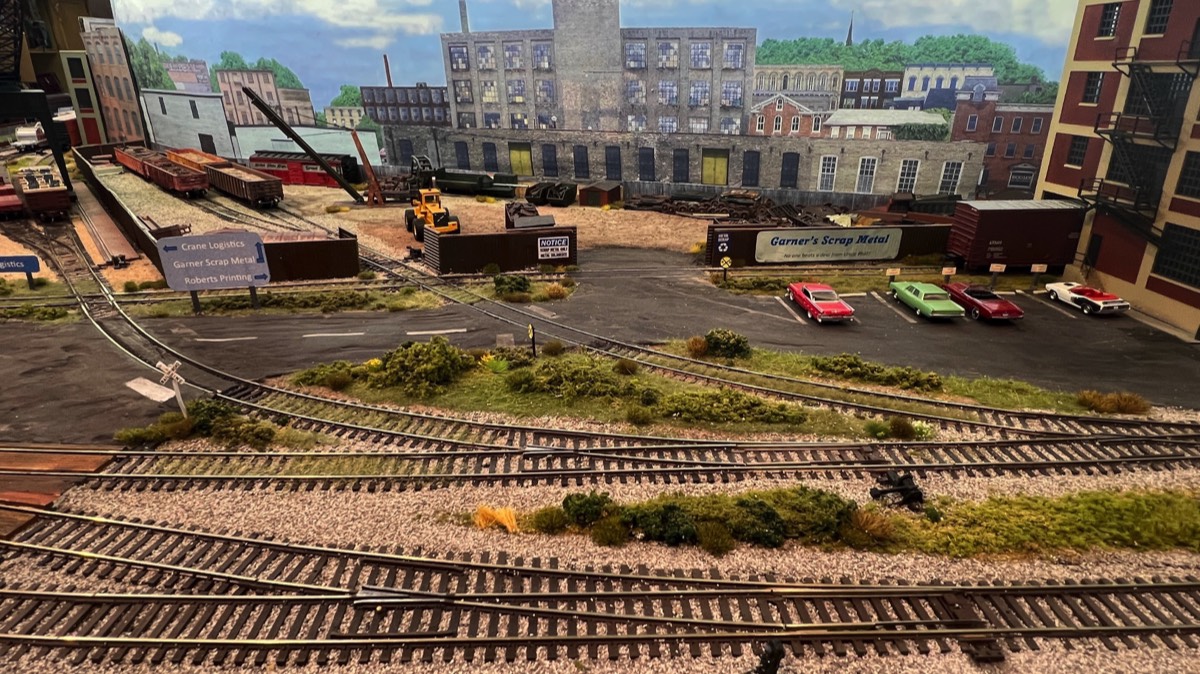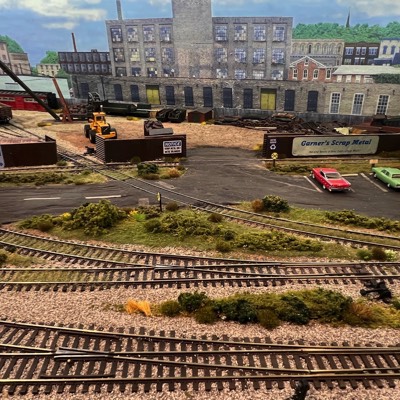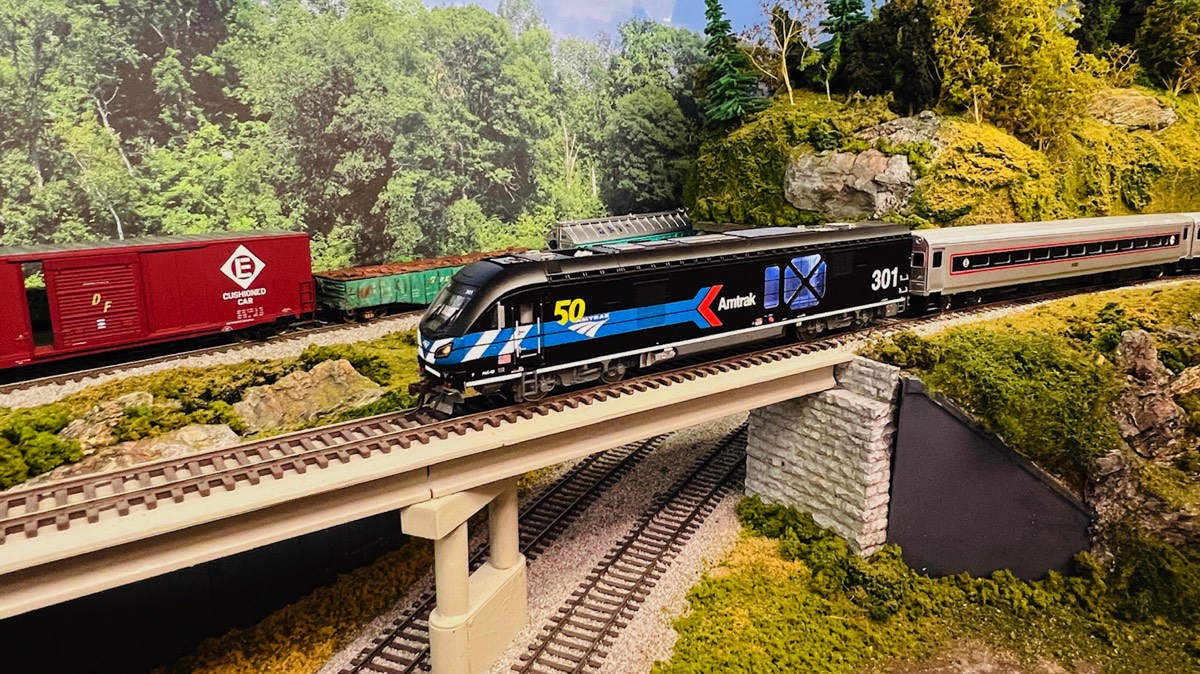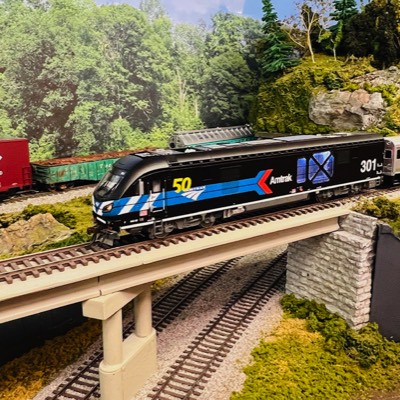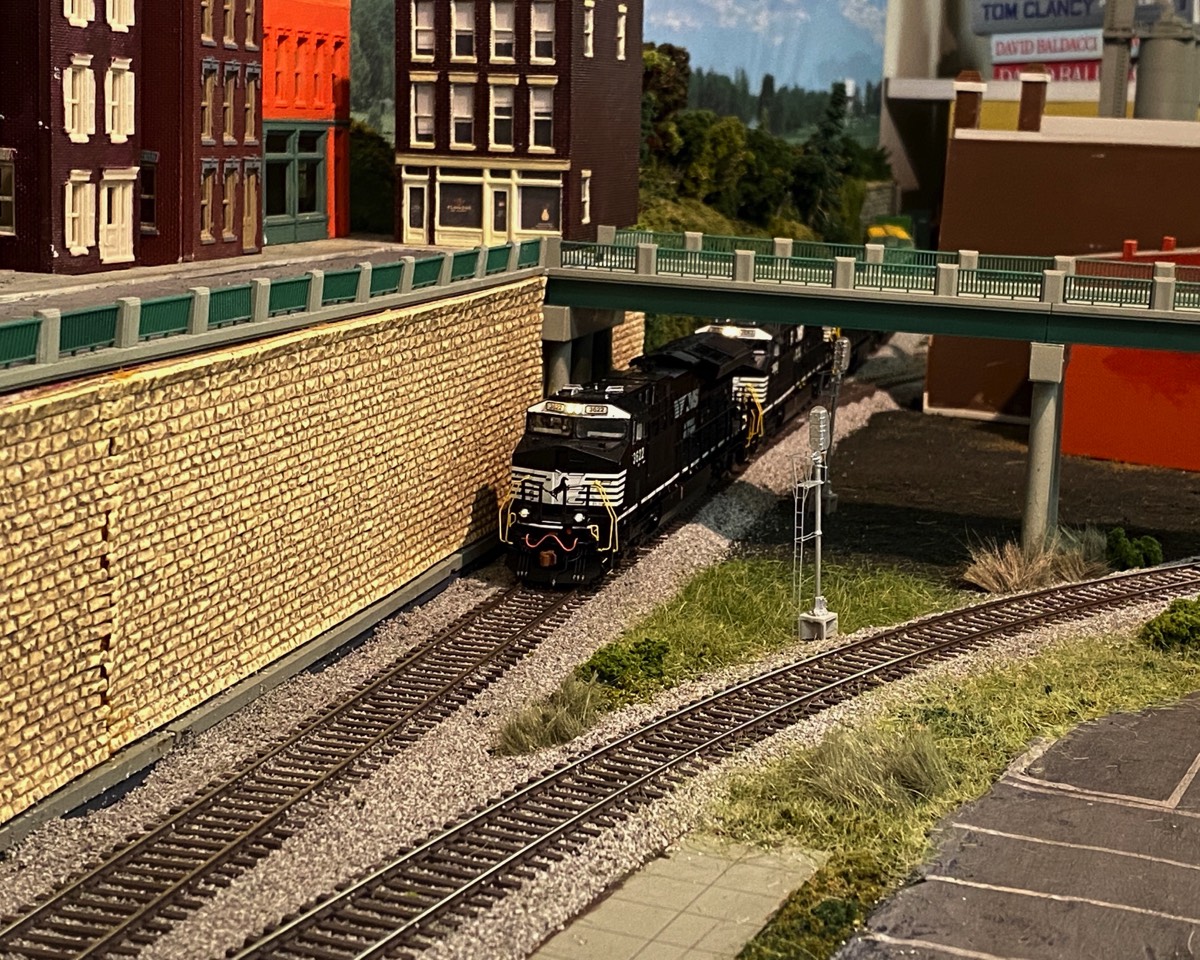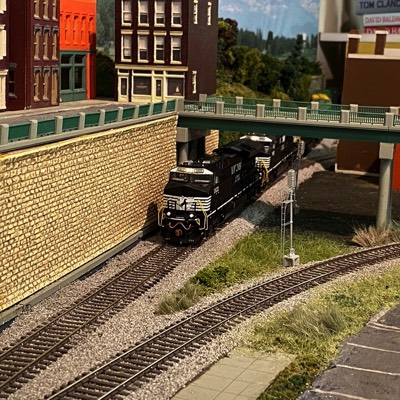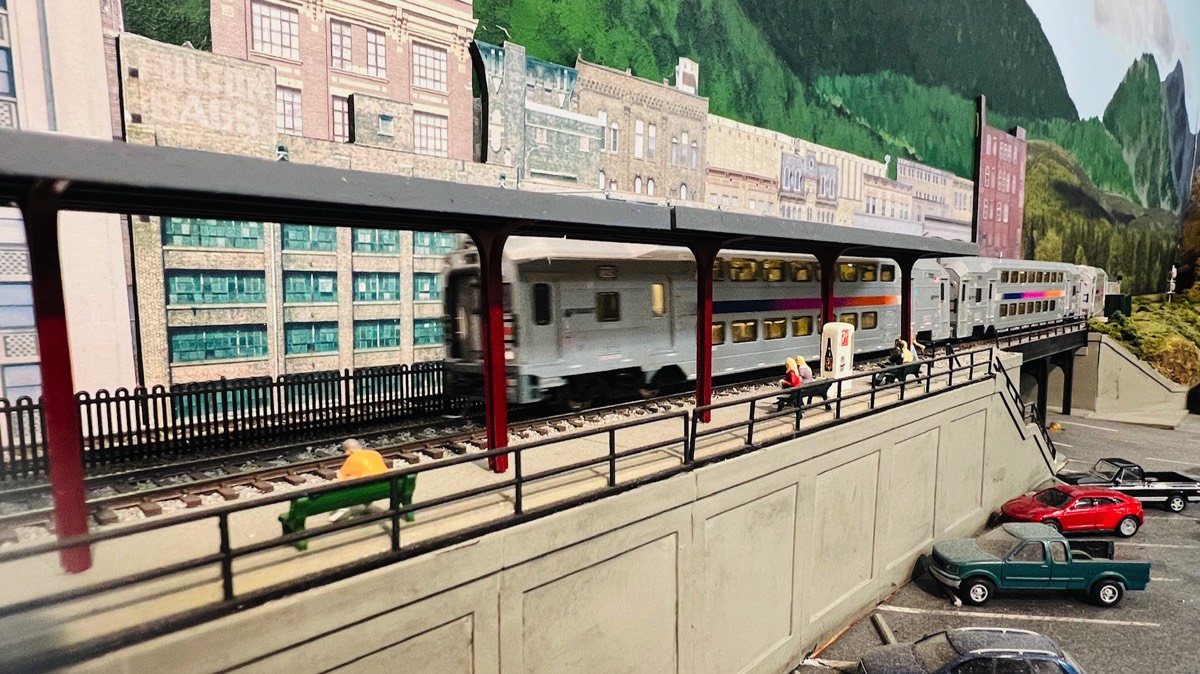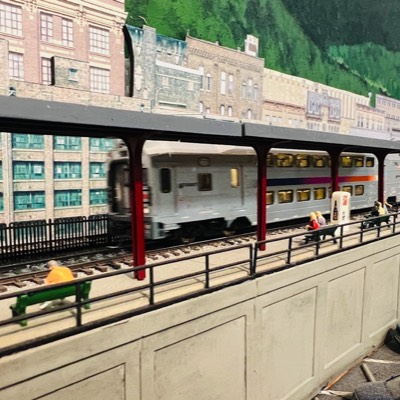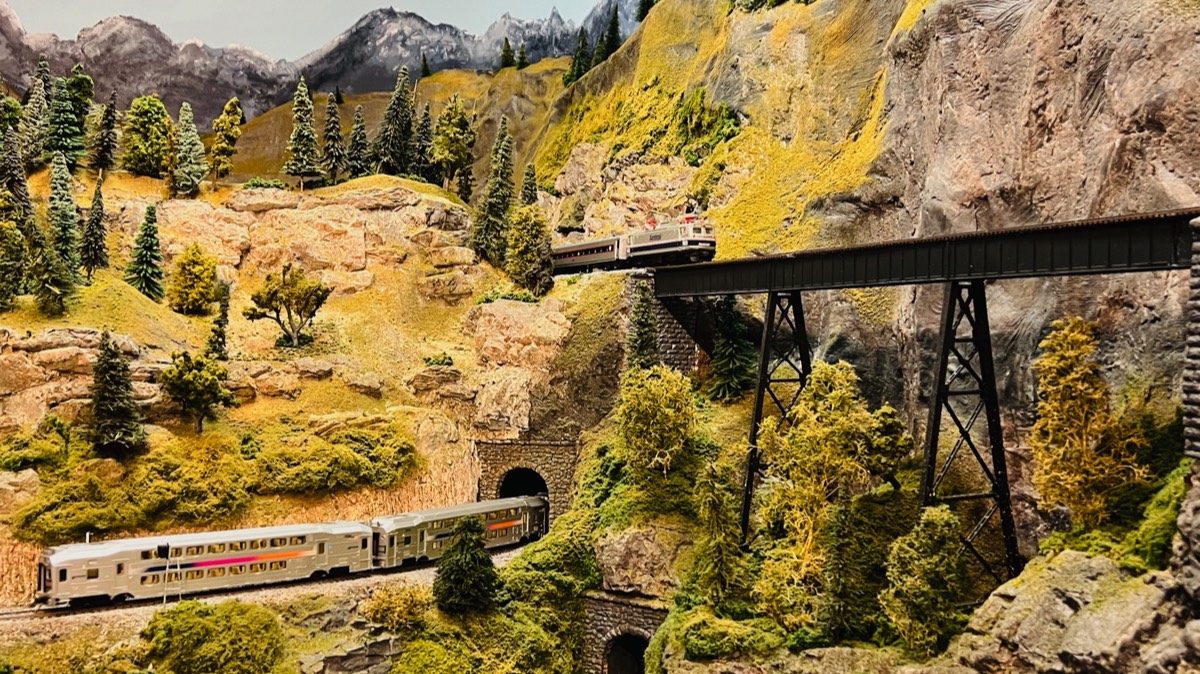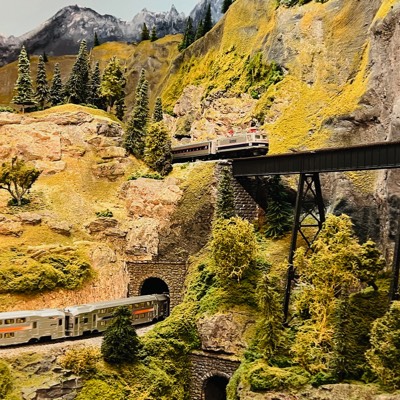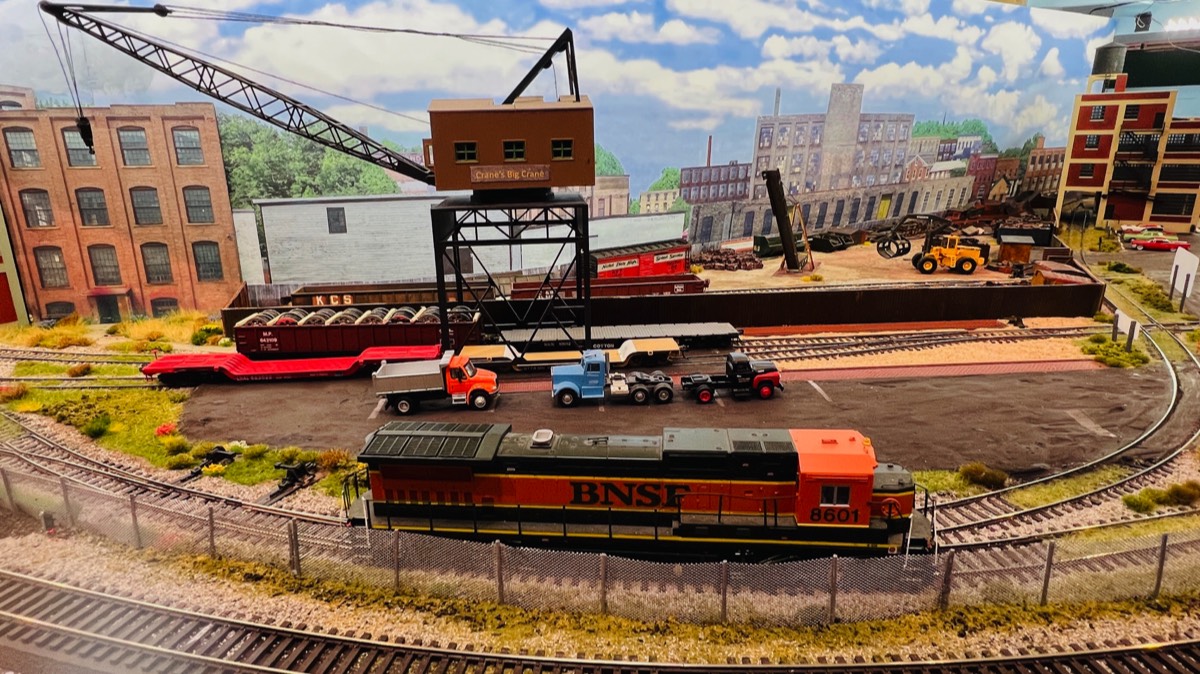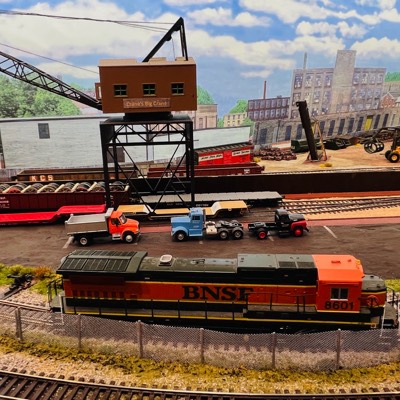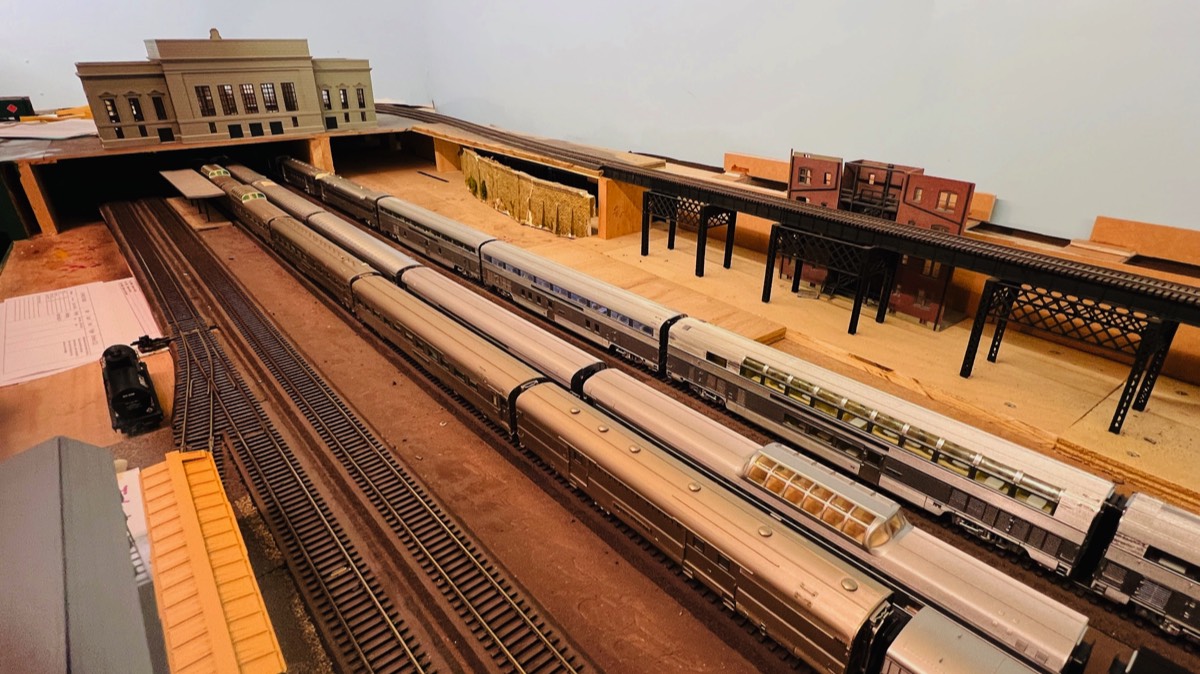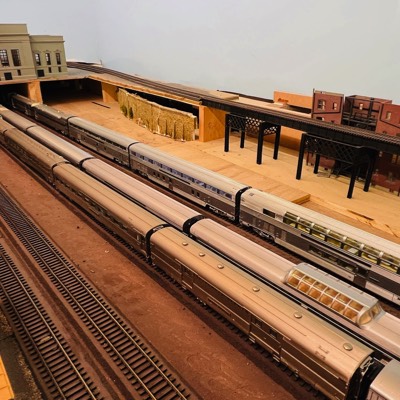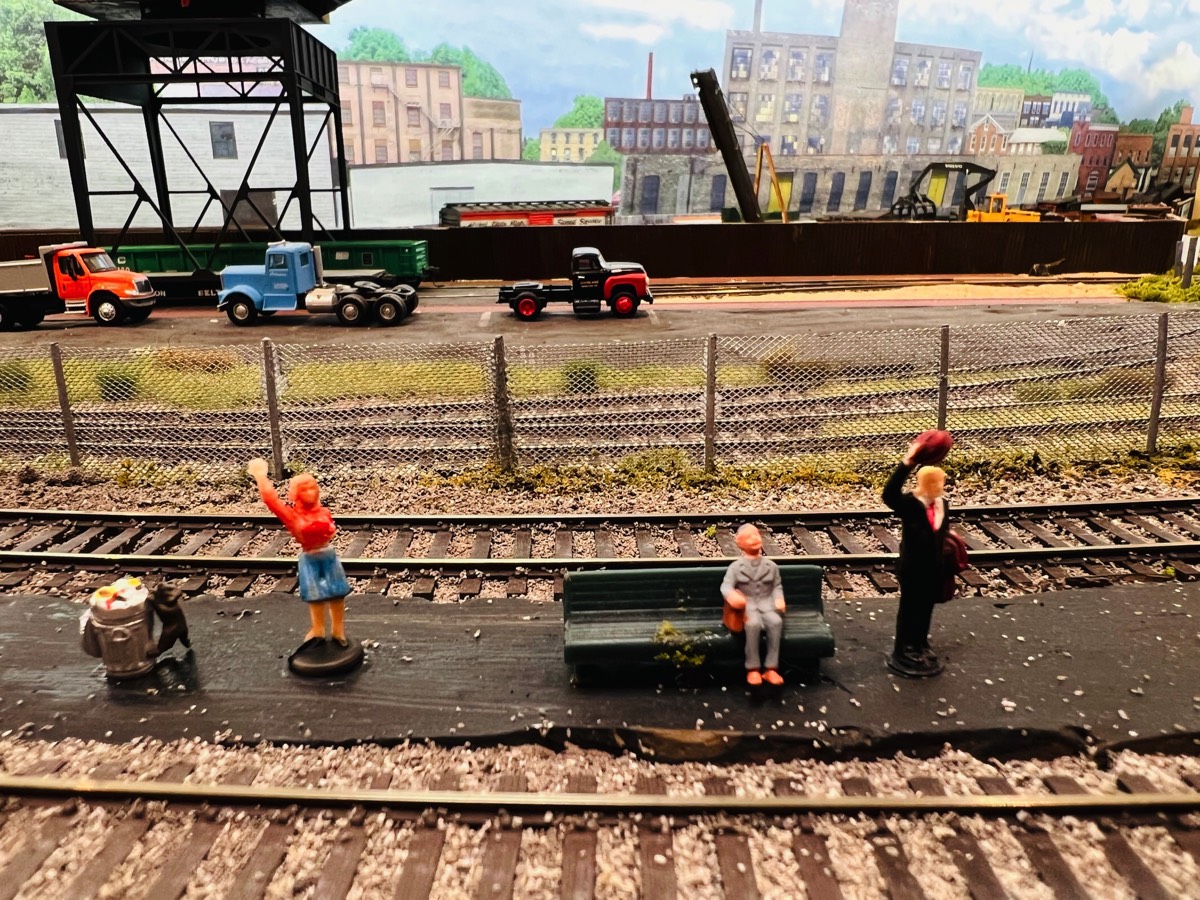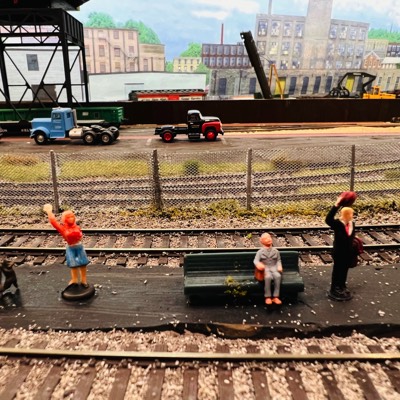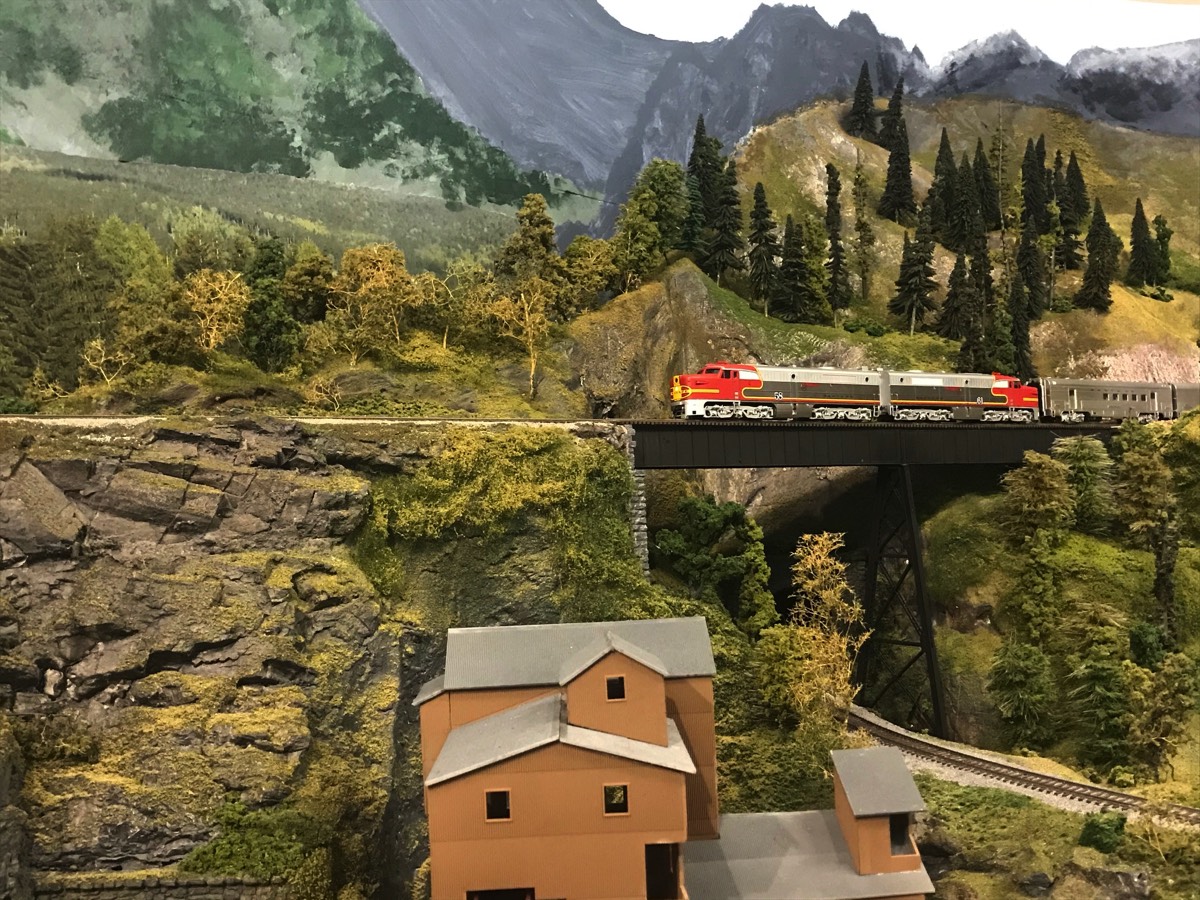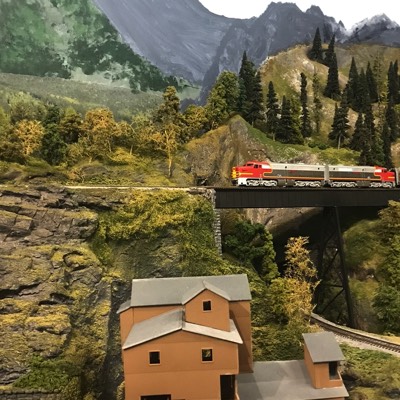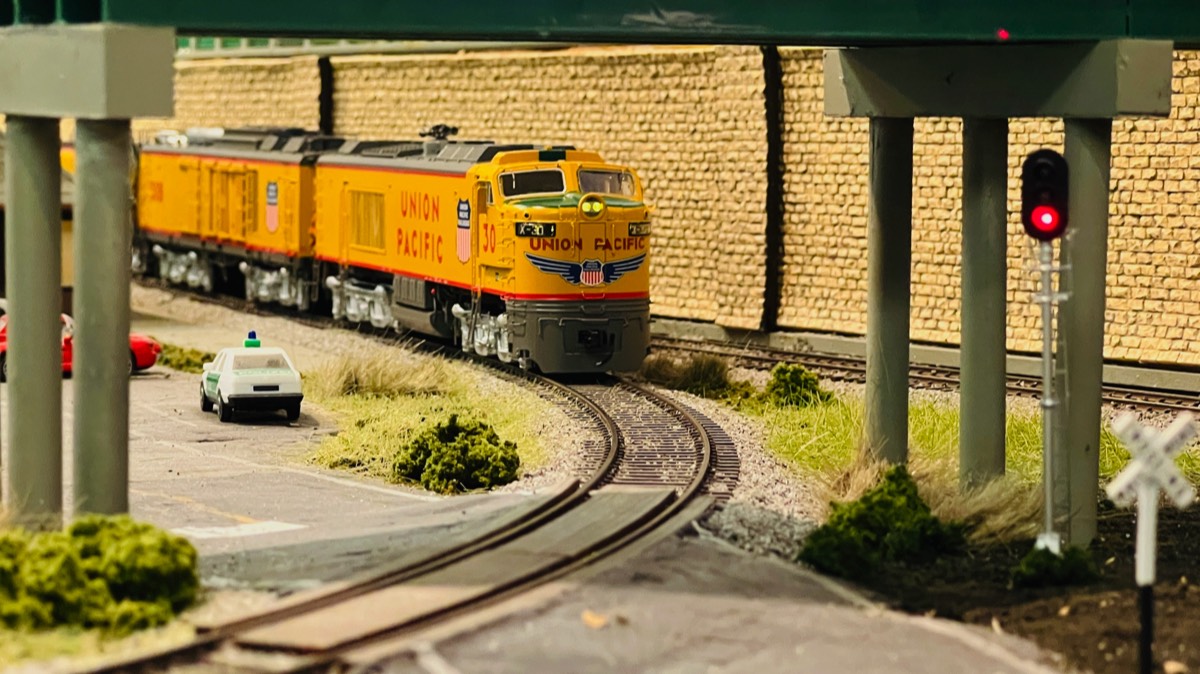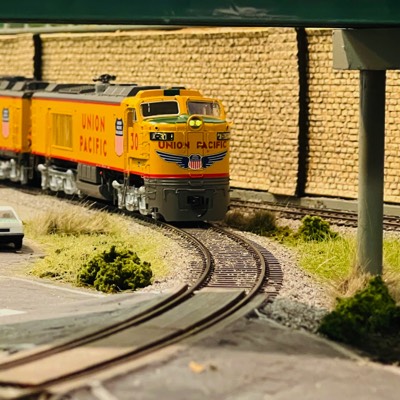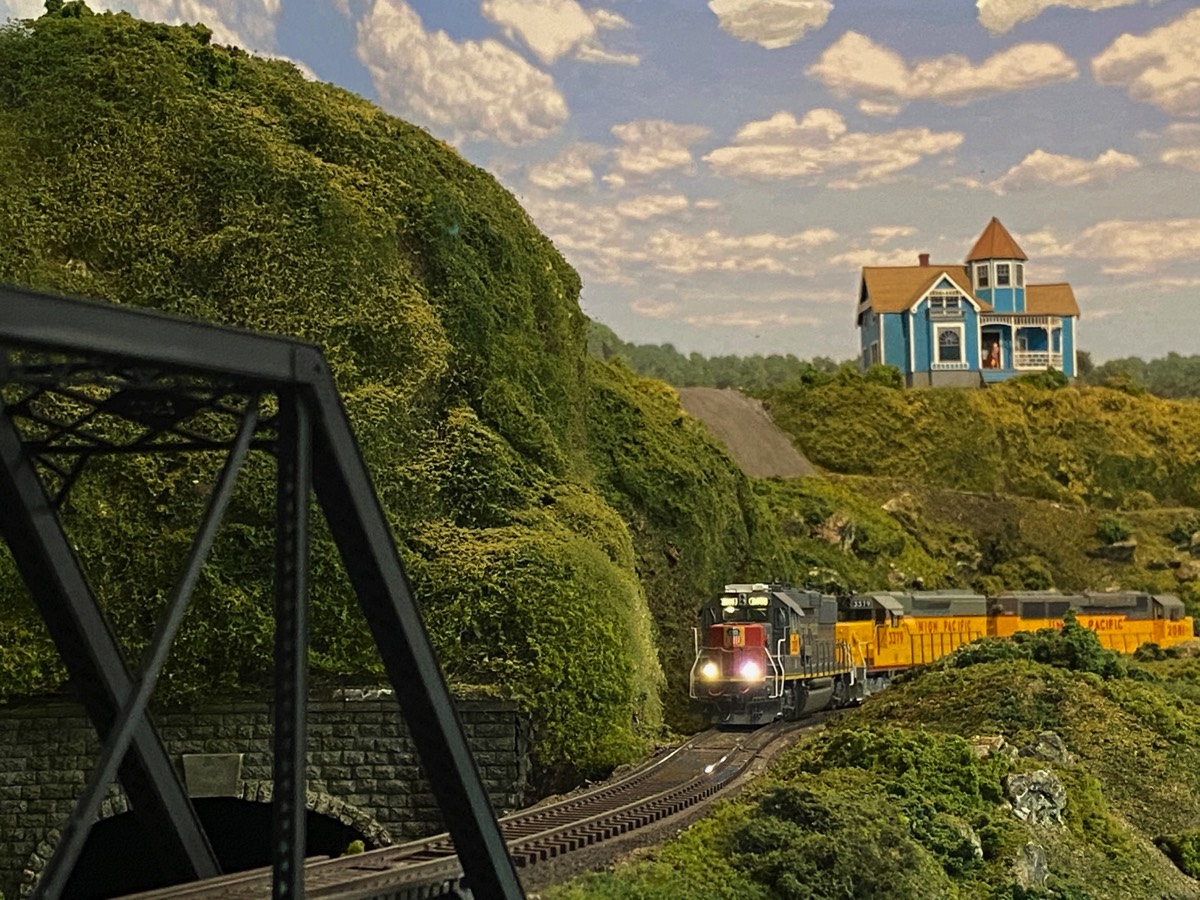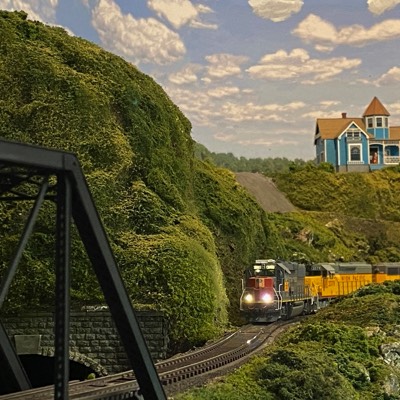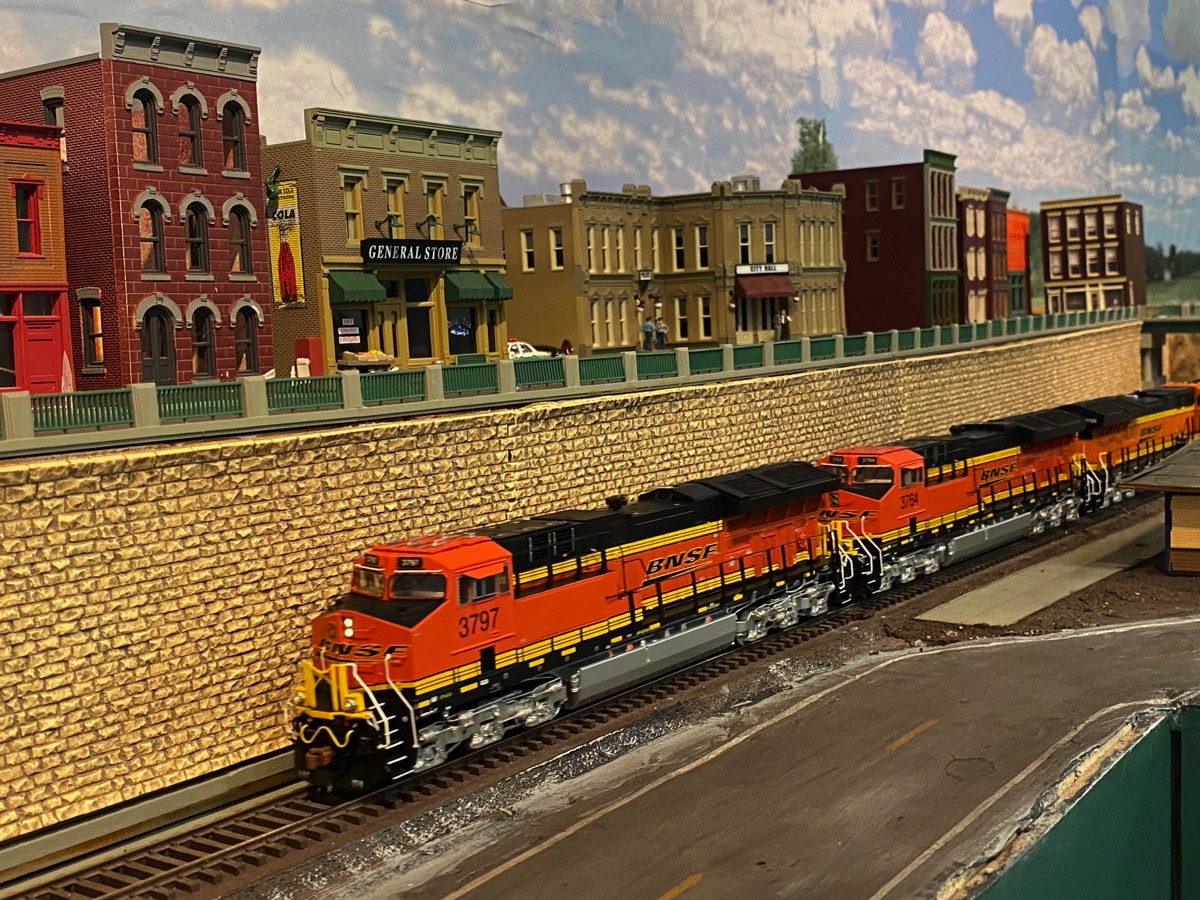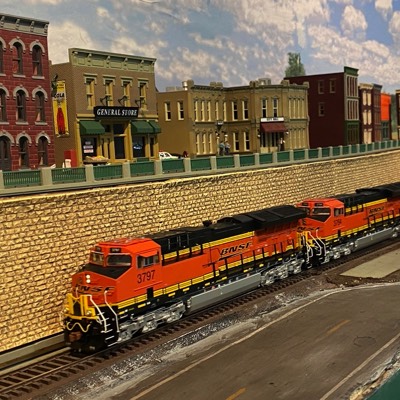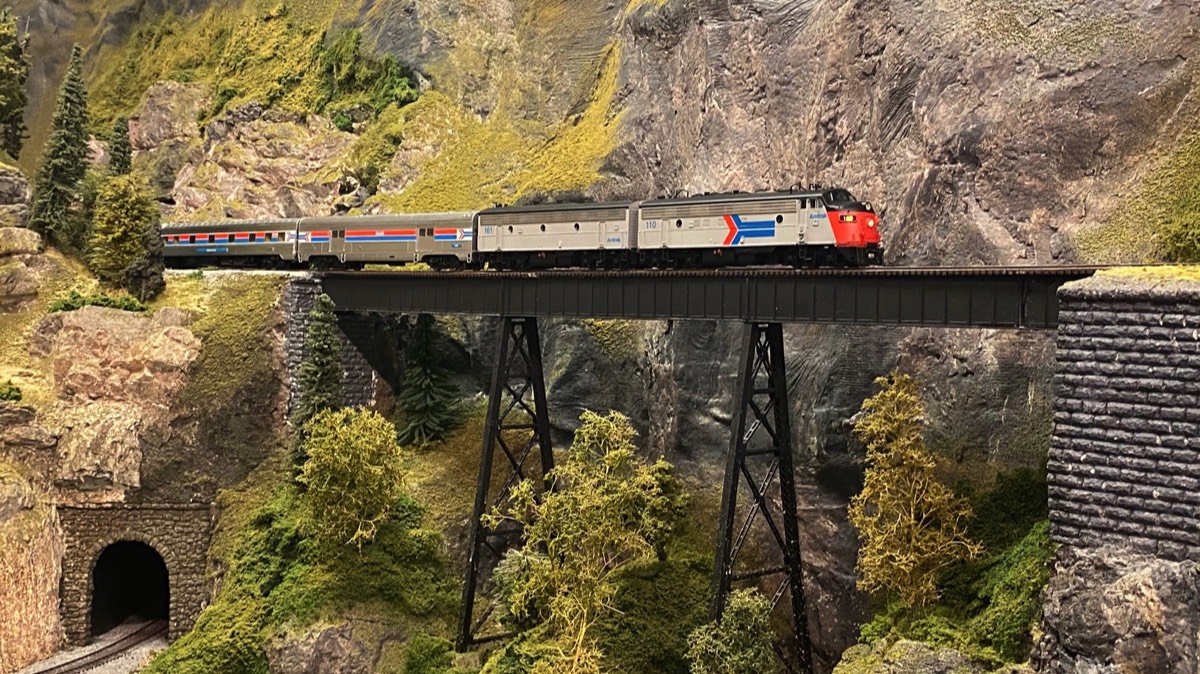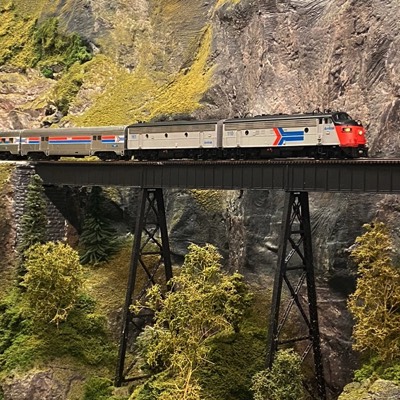Accessibility:
The layout is on the 1st floor and not wheelchair accessible. Layout has 3 levels. Lowest level is staging, but access to that level is not needed during an operating session. The middle level is about 50 inches off the floor. The upper level varies between 64 inches (Perth Amboy Yard) to about 69 inches. Aisle width is as low as 24 inches with wider aisles of 30 inches and 36 inches as well. There is a large open space at the entrance to the room. Floor is carpeted. There is a duck-under for the “high line” but it is 6 feet off the floor so only a slight head lowering is required to pass underneath.
Layout Description: The Paul Family Lines is a completely free-lanced railroad, running equipment generally from the 1960s to the 1980s. Most of the place names are from New Jersey, but the equipment is generally for railroads local to the Houston area, namely UP and its predecessors and BNSF its predecessors, BN and AT&SF.
The layout is designed for end-to-end operation with reverse loops on each end for continuous running. There are staging areas in the lower level and behind backdrops on the upper level which allow trains to enter or exit the railroad on the reverse loops at each end. There is also a long branch line that dead ends but also has two short staging tracks allowing traffic to originate or depart on the branch line.
The hidden lower level staging and receiving yards are connected to the middle level using a helix. The first middle level town coming off the lower level helix is Newark, which has a large passenger station, an engine terminal a couple of switching opportunities and passing tracks. The next town is Long Branch. Long Branch is where the branch line diverges from the main and has a passing track as well as an industrial yard with challenging switching jobs. After Long Branch, the railroad enters an offset helix to get to the upper level. The offset helix is the scenic highlight of the railroad, as shown in the pictures below. The helix has one industry to switch. Once on the upper level, the first town is Perth Amboy. Perth Amboy has a passing track and a small switching yard. The next town is Summit which has one industry to switch. After Summit the railroad enters the upper reversing loop and trains can either circle the loop and come back down or access one of the upper staging or receiving tracks to exit. The town of Sutton Place is on the upper reversing loop. The upper reversing loop is also known as the “high line” for reasons that are apparent in the pictures.
The branch line runs from Long Branch to Gladstone. There are a number of switching opportunities along the branch line. Long Branch is a major junction on this railroad.
The operating opportunities are split between fairly intensive switching turns and mainline “let ‘em run” jobs with no stops or freight interchange. Maximum train length is 15 feet, so long freights are regularly run with multiple units. Passenger trains generally have 8-10 cars.
Scenery is complete or at least “good enough for now” on about 50% of the layout.
Crew Positions / Jobs:The layout typically operates with 4 to 5 people with only the dispatcher holding the job the entire session.
- Dispatcher, coordinates all train movements using JMRI display.
- Perth Amboy Yardmaster. The Perth Amboy Yard is an intermediate yard which is used to create and break down the Long Branch and Gladstone turns. The trains are short (5-7 cars), but this is a fairly challenging position that will require the yardmaster to figure out where to build and store the trains that are called for in the switching lists.
- Morning Long Branch turn. This job takes a train from one of the upper level staging tracks and sets out and retrieves cars from the Long Branch Industrial area and Glacier Gravel inside the upper helix. The retrieved cars are taken to the Perth Amboy Yard for processing.
- Morning Gladstone turn. This job takes a train from one of the upper level staging tracks and sets out and retrieves cars from Summit and the Gladstone Branch industries. The retrieved cars are taken to the Perth Amboy Yard for processing.
- Afternoon Long Branch turn. This job takes a train from one of the Gladstone Branch staging tracks and sets out and retrieves cars from the Long Branch Industrial area. The cars are taken to the Perth Amboy Yard for processing and the turn picks up traffic at the Perth Amboy Yard and returns it to the staging track where it originated.
- Afternoon Gladstone turn. This job takes a train from one of the Gladstone Branch staging tracks and sets out and retrieves cars from the Gladstone Branch industries. The cars are taken to the Perth Amboy Yard for processing and the turn picks up traffic at the Perth Amboy Yard and returns it to the staging track where it originated.
- Main line freight engineer. This job takes a freight train from the upper staging area to the lower staging area (or in reverse) and traverses the entire railroad with no stops for interchange.
- Passenger train engineer. This job takes a passenger train from the upper staging area to the Newark Passenger station (or in reverse) with no stops.
- Commuter train engineer. Commuter service between Sutton Place, Long Branch and possibly Gladstone. This train stops at each town along the way. Some locomotives may need to run around their train to go back in the other direction. Other trains operate in “push-pull” mode.
Layout Features
- Four track passenger station at Newark
- Dead-end branch line from Long Branch to Gladstone
- Three 15 foot passing tracks
- Approximately 20 industries with switching opportunities
- Perth Amboy Yard switching
- Uses a custom switch list generator created using Excel Macro
- Digitrax throttles, TCS universal throttles and tablets are available for use. Visitors are welcome to bring their own Digitrax throttle, a universal throttle or their iPhone or Android to control trains. Any throttle device that can connect to my home WiFi should be able to control train on my layout as long as it can communicate with JMRI server.
- Several Blunami equipped locomotives if someone wants to use the Soundtraxx Blunami app.
- Layout dispatched by JMRI with dispatcher control over all mainline turnouts and layout diagram showing occupancy.
- Working signal system controlled by JMRI (not all signals are physically present yet)
- Operations typically include the following in a 3-hour session:
- 2 main line passenger trains
- 4 main line freight trains
- 2 commuter trains
- 4 switching jobs or “turns”
To Next Layout Description
Back to Layouts 